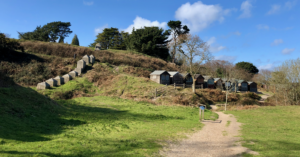Going beyond PARP1/2 inhibition with novel approaches

Immune cells and tumour cells can act like a changing kaleidoscope depending on the situation
While we have seen many studies on the mechanisms of primary and acquired resistance to small molecule inhibitors leading to rational combination therapies, our understanding of what’s going on under the hood in response to protein degradation or immunotherapies is much less certain.
In our latest post, we explore how these worlds are now starting to collide and how tumour behavior at the time of resistance can better inform translational studies as well as future clinical combinations.
While there have been numerous studies emerging on the dual IO-IO front, let’s not forget there are still many opportunities to explore synergies with small molecule agents to address mechanisms of resistance…
To continue reading our latest discussion on oncology new product development plus expert commentary and analysis BSB subscribers can log-in or you can click to access the content.
This content is restricted to subscribers
 By an interesting quirk of history, the first time we wrote about PARP inhibition was in the same year and now it is one of the selections in the ASCO plenary today. You can read more about the
By an interesting quirk of history, the first time we wrote about PARP inhibition was in the same year and now it is one of the selections in the ASCO plenary today. You can read more about the 

